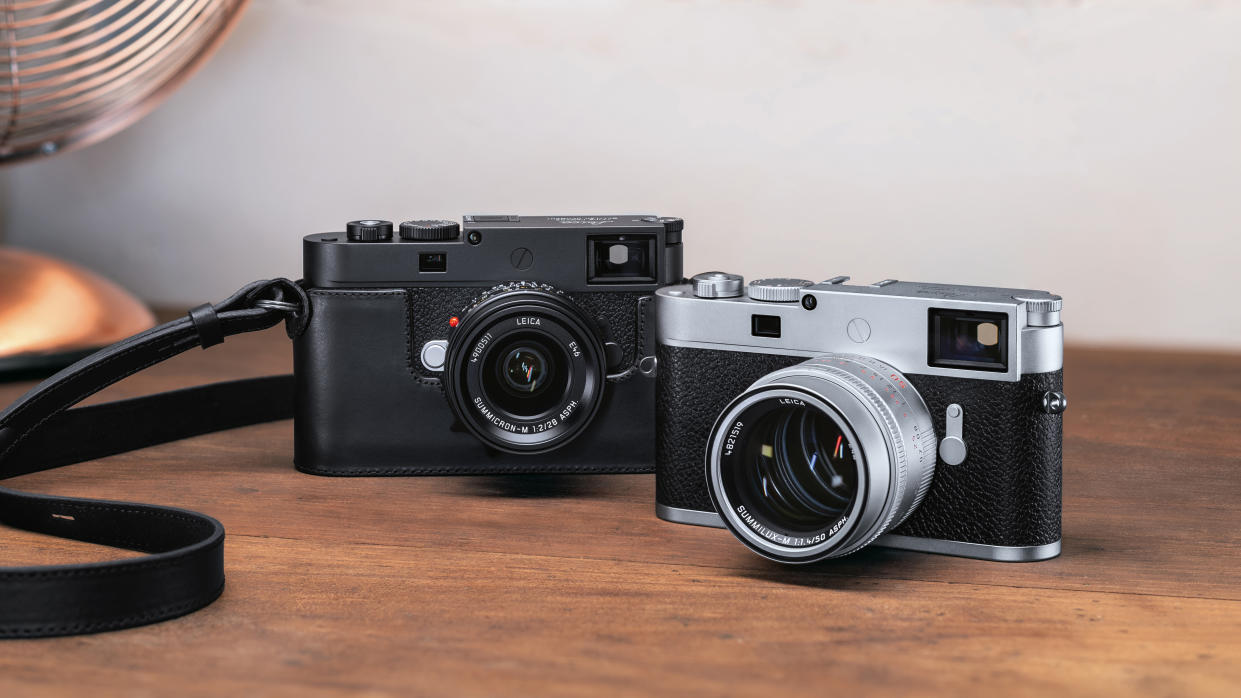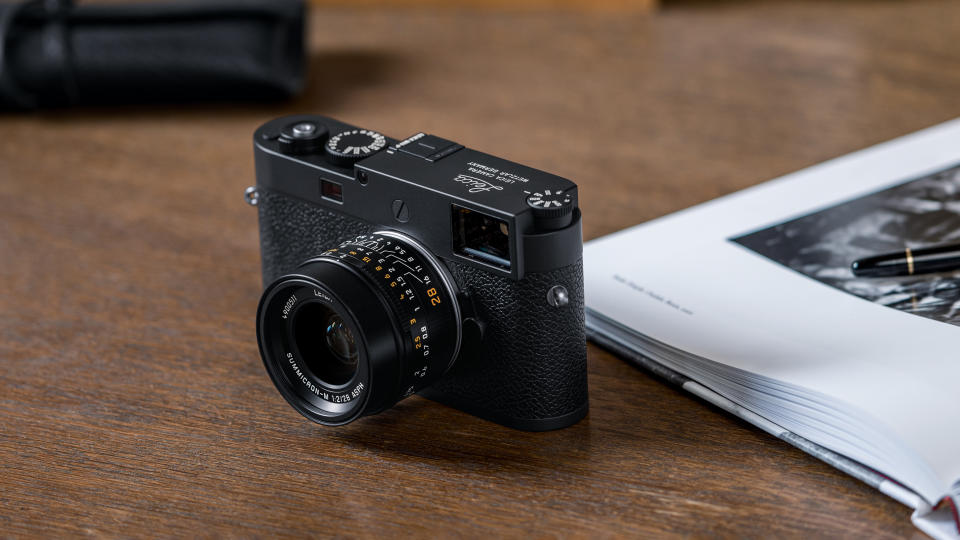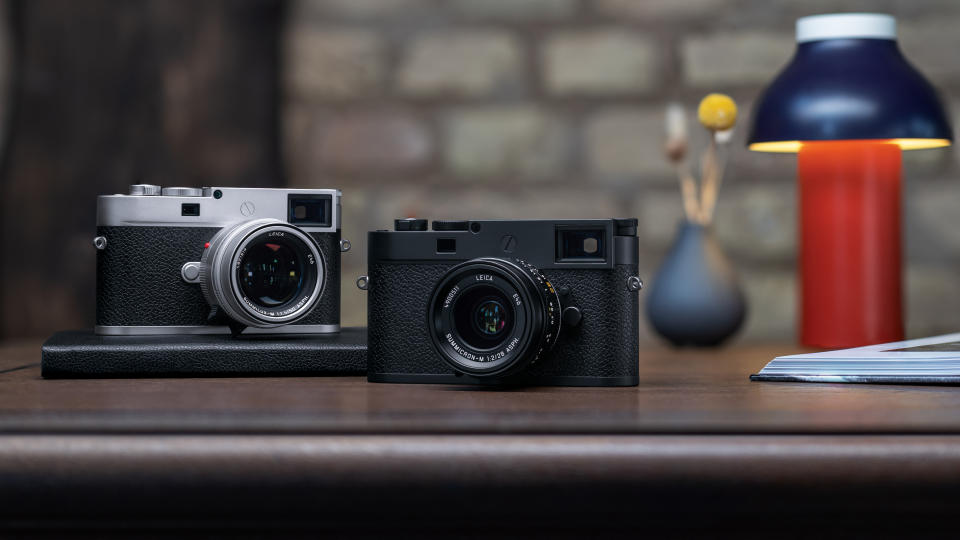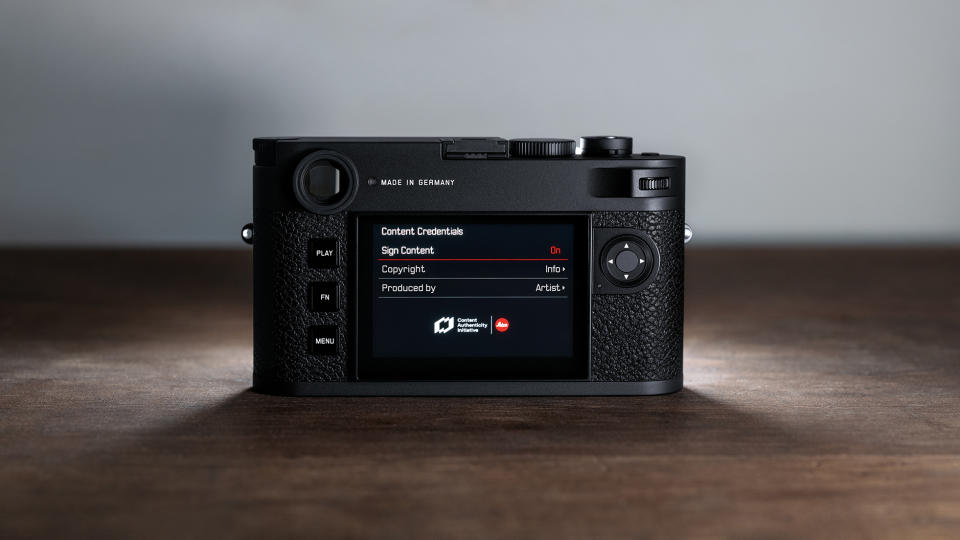Leica’s new M11-P aims to take on AI fakes and disinformation

Leica has just announced the release of the latest in its M-series of cameras – the Leica M11-P – and it has a new trick up its sleeve to help photographers in the fight against AI stealing their work with built-in Content Credentials.
With the exception of the new Content Credentials hardware chip (which we will talk about in a second), the Leica M11-P internally is the same as the Leica M11. The Leica M11-P comes equipped with a 60MP BSI CMOS sensor, which uses Leica’s now signature Triple Resolution Technology, enabling images to be taken in 60MP, 36MP, and 18MP, gaining an extra stop of dynamic range for each step down in resolution.
This is paired with the Maestro-III processor, which enables better ISO performance and processing than the previous generation of M-series cameras. The M11-P also has 256GB of internal memory, which can be connected to Macs, PCs, and the Leica Fotos app. The camera features an LCD monitor made of sapphire crystal glass with an anti-reflection protective coating, ensuring optimal image evaluation in various lighting conditions.

The real difference in the M11-P is on the outside of the camera. The M11-P eschews the traditional red Leica dot on the front, instead having elegant engraved branding on the top plate of the camera. Leica says this is more popular with street photographers and photojournalists as it is more discreet, which is one of the key audiences for this camera. The M11-P is available in a lighter black aluminum, or the heavier but more classic brass chrome version.
Both black and silver versions of the Leica M11-P are available to buy now and will cost £8,000 (global pricing TBC) and, if you want to accessorize, Leica will also sell you a complementary leather M-System case and a matching carrying strap.

Leica Content Credentials
With the M11-P, Leica is the first major camera company to release a camera using the open-source standards of the Content Authenticity Initiative (CAI), which aims to provide the means for photographers and artists to protect the authenticity of their original work.
The number of AI image generators has exploded exponentially over the last several years, and there has been a heated debate about where AI gets its data from, how the original creators are compensated when their work is used in AI creations, and how to prevent work ending up in AI databases at all.
The CAI – a coalition of over two thousand different companies including Adobe, X (Twitter), Getty Images, and the BBC – proposes a solution to the situation. By offering an open system for hardcoding files with creators' information, it hopes to keep a record of images, enabling crucial information such as names, dates, image alterations, and the camera and software used to create and alter images to be securely embedded within the photograph and protected from tampering or removal.

The Leica M11-P comes with Content Credentials technology through the incorporation of specialized hardware within the camera, including a dedicated chipset for storing digital certificates provided by the German Federal Printing Office.
Due to the hardware requirement, this means the feature won’t be coming to older Leica models. This initiative is in its early days, and it will be interesting to see how effective it is in the long term, but it's great to see Leica taking steps to help protect photographers.
Find your next Leica camera in our guide of the best Leica cameras, or if you want something that will look good on the street, then check out our top picks for the best cameras for street photography.

